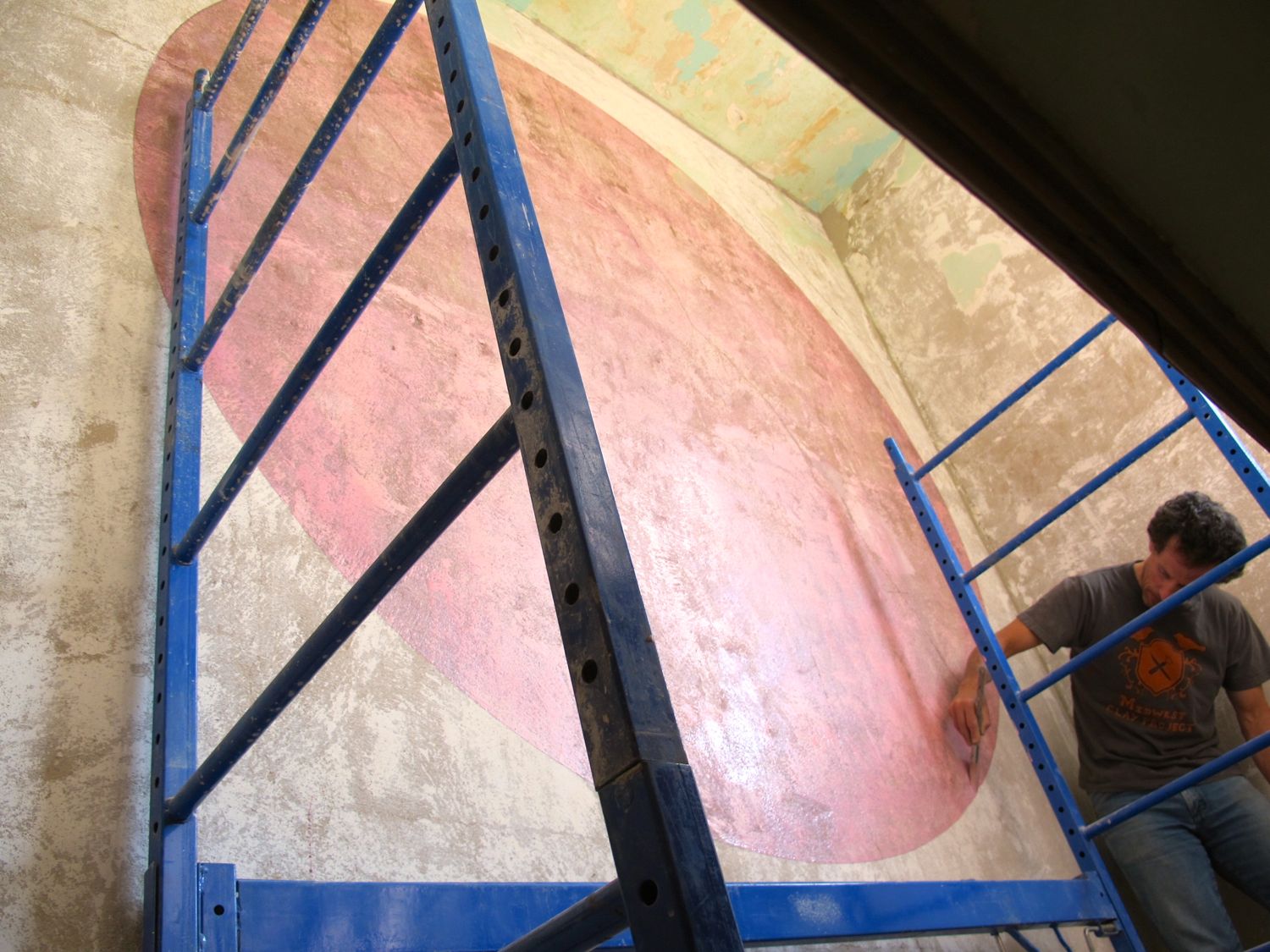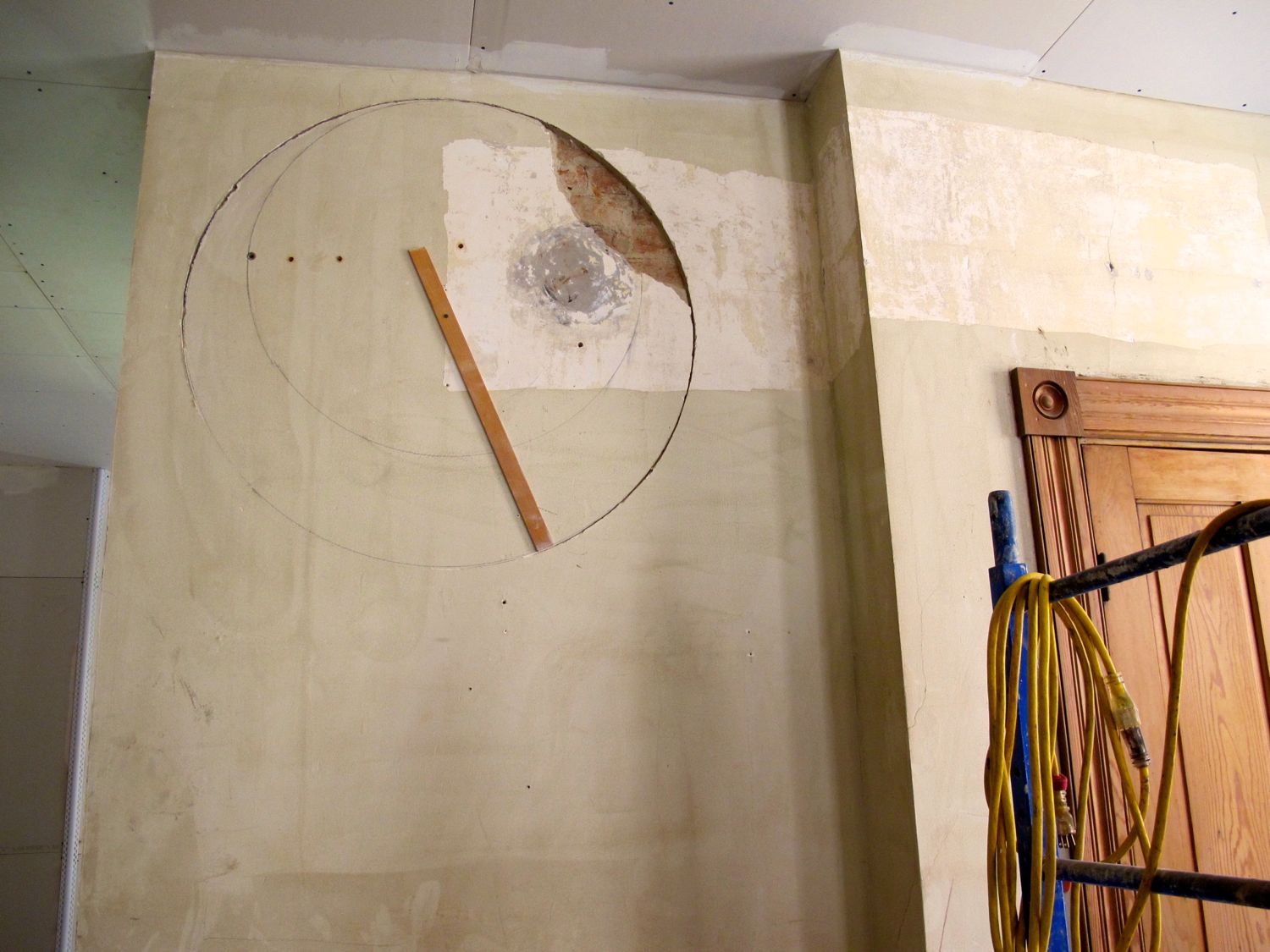PROCESS: GESTURE
“With the purchase of this house I wanted to have some fun — slap the notion of safe ‘neutral’ choices in the face. The way I see it, I’m surrounded by opportunities to play around, inspired by my constant companion: the house! ... and there are some frickin’ cool things about this place. As I developed ideas for the 5K house I kept referring to the circle shape (hence the name change). At first I fought it wanting to use other forms for inspiration, but it was unshakable and I have now fully embraced the circle.”
The Circle House is no ordinary renovation project. Embedded in each surface and space is evidence of a highly attuned craftsmanship and personal expression. Through a variety of architectural gestures, Mark’s Circle House pays homage to the integrity of the original materials, and the history of the building and neighborhood. This collection of images showcases the architectural interventions that make Circle House so unique.
The large raised “Blue form” and the two raised circles offset the textured character of the exposed wall that borders them; the form with its glowing cobalt and the circles with their hand-smoothed white finish. Both shapes limit a visual overload from the static of the exposed plaster. The form is made of layers of joint compound and Glidwall with a coat of ‘poor man’s venetian plaster’: tinted USG Duro-Bond 90. The two circles were applied by first painting on a pink glue-like product called PlasterWeld to allow good adhesion of the base coat. Mark’s base coat had a coarse texture, and the final white lime coat was troweled on smooth.
Every circle in the house is expressed differently through varying scales, textures, relationships to existing surfaces, and even the particular logic of perspective. The impossible geometry of the smaller of the two white plaster circles invites occupants in the entry hall to approach the stairway landing as the illusory device reveals itself. In the dining room, a circle of plaster coat has been removed entirely, exposing the brick underneath, and connecting two rooms through the wall with a section of pipe. In the front bedroom upstairs, Mark echoes the dumbbell shape of the electrical runs in the wall which are evident elsewhere in the house. Using a six inch grid and orbital sander, he systematically wore away five layers of paint to create two pulsating orbs of electric color, and a sampling of the color history of the walls. On the ceilings are circular forms that just fit inside the dimensions of the room, containing the junction box for the ceiling light and creating a dome-like effect.
Two massive wood forms dominate the experience of passing through the stairwell. They are ‘casting patterns’-- artifacts of the history of the immediate neighborhoods and an industry that’s almost extinct now in Cincinnati.
“I’ll find elements in the demolition and reconstruction process I like and want to keep. I keep them in the back of the mind until a solution pops up; sometimes by playing around with ideas, the answer will come... One influence is my love of casting patterns. They are the initial form, made of wood, used as the master mold for casting metal. Many of the pieces I’ve collected come from a foundry that was torn down over twenty years ago. The ones used here came from a cache that were released from a recently completed ‘warehouse to living space’ project in the nearby neighborhood of Northside. Sometimes I remove parts of the pattern to simplify the form. I also sand the weathered surfaces to feed a passion of mine: exposing natural woodwork. I’ll say it one more time, to really drive home the point: I CAN’T get enough of the stuff! The end results are a magical mix of a time honored patina and revealed master craftsmanship culminating in a very contemporary form. Juicy, I must say...”
The two forms relate to one another as a direct positive and negative. In the landing, Mark has built out the back of the wall to accommodate the depth of the pattern, creating an inverted version of its sister shape at the top of the stairs.



































